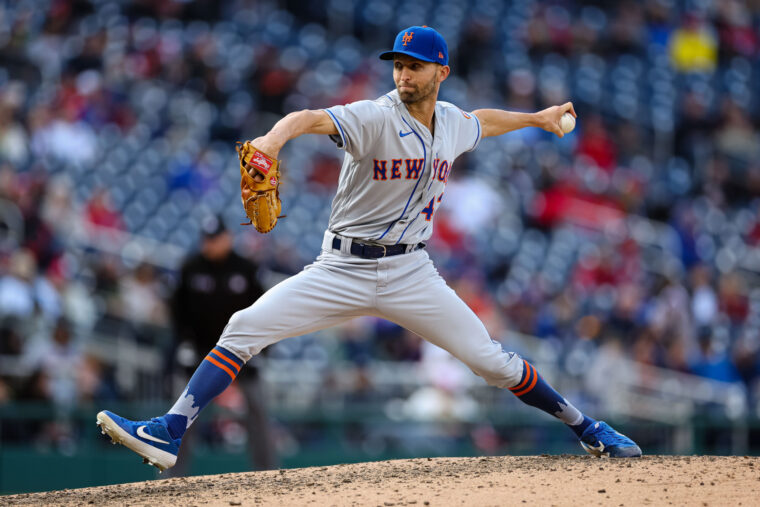
Scott Taetsch-USA TODAY Sports
The Mets made quite the gamble this past winter by passing on Aaron Loup, and letting him sign with the Los Angeles Angels. Loup had a career year in 2021 with the Mets. He finished the season with a 0.95 ERA over 65 games and cashed that into $17 million contract over two years.
The Mets opted to not pursue top lefty arms on the market in Andrew Chafin, Jake Diekman, and Brad Hand. Instead, they chose to bring back one of their best arms from 2020, Chasen Shreve, and trade for Joely Rodriguez (giving up Miguel Castro in the process) as lefty options for the bullpen.
Shreve, 31, has a career ERA of 3.55. He has always been a pitcher that hovers around a 3.00 ERA, but he never has been considered a top lefty in baseball. The main reason for that is his walk numbers. He has a career 11.6% walk rate and has never had that number below 9.2%.
However, it seems he has turned things around in 2022. This season, Shreve has a BB/9 of 1.5, as he has only walked two of the 42 batters he has faced. That’s 4.8 percent.
However, the walk rate isn’t the only thing that he has drastically improved this season for Shreve. He also is rocking a 13.1 K/9, which is on pace to be the highest of his career. He has pitched to a couple strikeouts less per nine innings throughout his career.
He has struck out 40.5% of the batters he has faced in 2022, though, which is the ninth-best in baseball.
He has always been someone who can miss bats and strike people out to an average clip. However, the combination of a decrease in walks and an increase in strikeouts has led to him being one of the best relievers in the Mets bullpen in 2022.
While his 1.54 ERA tells a pretty good story of how his season has gone, there is one number that jumps off the page: K/BB. He has averaged a ratio of 2.29 strikeouts per walk over the course of his career. In 2022, his current ratio is 8.50 strikeouts per walk. That’s four times his career average.
While these numbers have stood off the page, he is on pace to have a career-best in pretty much every category. He is performing better than his career average in FIP (0.67) and WHIP (0.69), in addition to the BB/9, K/9, and K/BB. He also hasn’t given up a home run yet.
So what has led to this success?
One major reason is the confidence to throw his splitter out of the strike zone. Compared to 2021, Shreve has thrown his splitter in the strike zone 6 percent less in 2022, as Mathew Brownstein points out. This change has worked incredibly well for him, as he has increased his whiff percentage on that pitch almost 25% in just one season.
While two-thirds of his innings have been in low-leverage situations, per Fangraphs, he has performed equally as well in low leverage spots as he has in high-leverage spots. One of those high-leverage spots was Sunday when Shreve struck out Bryson Stott with the bases loaded in the sixth inning in a five-run game.
Shreve has used the splitter in 37 of the 58 two-strike counts he has had this season. That is 15% more than his career average has been, and it has paid off. Being able to get more whiffs with his splitter and use the pitch in higher-leverage spots has paid off for Shreve.
Whether this will continue through a full season or not will remain to be seen, but he has been one of the most reliable arms in the Mets bullpen in 2022. Through a month of the season, he is making the Mets look like geniuses for not spending at the top of the lefty reliever market this offseason.















